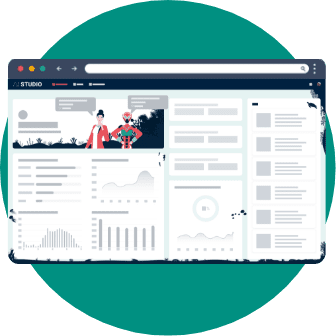Natural language processing (NLP) is the backbone of successful conversational AI. It helps your AI assistant recognise requests from your customers in their own natural language, and that comes from an unimaginable wealth of NLP training that feeds into your AI assistant.
Here’s why AI assistants are most powerful with NLP (and why they don’t work well without it).


Know what your customer wants to do
Your AI assistant needs to know exactly what it’s being asked to do before it can take any action. It’s the same for us. If you were asked to cook something, you need to know about favourite foods. Food allergies. The number of people you’re cooking for. When, and where?
What’s tricky is different people can express details for the same query in many different ways. “Buy”, “purchase” and “get hold of” all mean the same thing. Similarly, your AI assistant needs to learn to recognise your subject matter. If you’re in the insurance industry and get a question about football tickets, your AI assistant doesn’t need to learn an answer to this question. It has to learn to focus only on what matters to your customers so, over time, it becomes an expert in your business.
Your AI assistant also needs to be able to follow a conversation in the same way we do. Comfortably going back and forth, clarifying essential details, and being able to answer new questions as they come to mind along the way or later on. This deep level of understanding is all driven by natural language processing (NLP).

Understanding subtle variation
Two customers have been charged the wrong amount for a parking fine, but there’s a subtle difference: one customer has already paid their fine and the other hasn’t.
 AI Assistant
AI Assistant
 Customer 1
Customer 1
 Customer 2
Customer 2
An NLP-based AI assistant can be trained to recognise the difference between being “asked to pay” and money already having been “taken” out of an account to pay for the fine. It then responds differently to each customer.








Basic chatbots don’t have NLP so can only follow a general rule about what to do with a wrong payment query. Here, it’s programmed to ask the amount the customer paid, which doesn’t help the person who is yet to pay, so their problem is unsolved and it’s a poor experience for the customer.
 Chatbot
Chatbot
 Customer 1
Customer 1

Seamlessly guide customers through every conversation
It’s vital your AI assistant recognises what your customer wants from you, but the challenge doesn’t end there. Conversations are rarely straightforward, and your AI assistant must be able to handle things like uncertainty or ambiguity, distraction and confusion, and your customers thinking as they go, changing the question or asking a new one.
In real life, conversations reach a full conclusion, no matter how difficult the path to resolution. We train your AI assistant to do the same, so it can answer questions and solve problems for your customers without needing any help from your team at all.


Ask clarifying questions
Two council residents report a missed collection. One says what the collection was for, but the other doesn’t.
 AI Assistant
AI Assistant
 Customer 1
Customer 1
An NLP-based AI assistant can be trained to ask a clarifying question to make sure it gives the right answer. Here, the AI assistant needs to know what type of collection was missed.
 Customer 2
Customer 2
The AI assistant knows when to ask a confirmation question and when not to ask. Here, the AI assistant already knows it’s a bulky item collection so goes straight to confirming the postcode.




A basic chatbot, on the other hand, might not ask a clarifying question. That means the customer only gets general information, which leads to them being passed around departments until they arrive ― frustrated, at the right one. Without an instant answer, the chatbot has been no help at all.
 Chatbot
Chatbot

Handle conversation digressions
 AI Assistant
AI Assistant
If a ferry customer wants to amend their ticket, an AI assistant can be trained to ask for a reference number to find details of the booking and check the type of ticket, since there are different rules for different ticket types.
Even if the customer interrupts this flow with a separate question, the AI assistant can handle the digression. It can answer the new question and return to the original query to finish answering that too.




 Chatbot
Chatbot
A simple chatbot can only present a list of information about each type of ticket manually, but that doesn’t help the customer if they don’t know what type of ticket they have. And if they change the question to ask how they find out, a chatbot can’t help them.

Address follow-on questions
 AI Assistant
AI Assistant
Just like in real life, a customer might have a conversation with your AI assistant, get their immediate answer, but then there’s an afterthought. Your AI assistant will be clever enough to remember the conversation that just happened and answer this afterthought as easily as you would.
Here, the question ‘How do I get there?’ has no specifics within it, but the AI assistant just answered a question about Belfast ferry port, so continues the conversation without a pause.



 Chatbot
Chatbot
A chatbot, because it doesn’t have NLP, can’t remember earlier questions. It’s obvious to you and I the follow-on question is all part of the same conversation, but the customer asks, ‘How do I get there’ and the chatbot doesn’t know where “there” is.

Dive straight into advanced AI without knowing anything about NLP
Artificial intelligence is getting smarter all the time, but a basic chatbot can’t evolve with it. Only an advanced AI assistant can learn new tasks and actions continuously. And with natural language processing, match the way your customers talk about your products and services.
Our advanced platform for conversational AI has NLP built-in, so your AI assistant can naturally evolve with your business into the future and alongside new technologies.










